When I choose something to add to my garden or allotment I always select items or projects that are easy to get the kids involved in, are not too difficult or expensive for me to set up and maintain and I like to ensure that it is something that we will all get enjoyment from. Creating a Strawberry Patch ticks all those boxes.
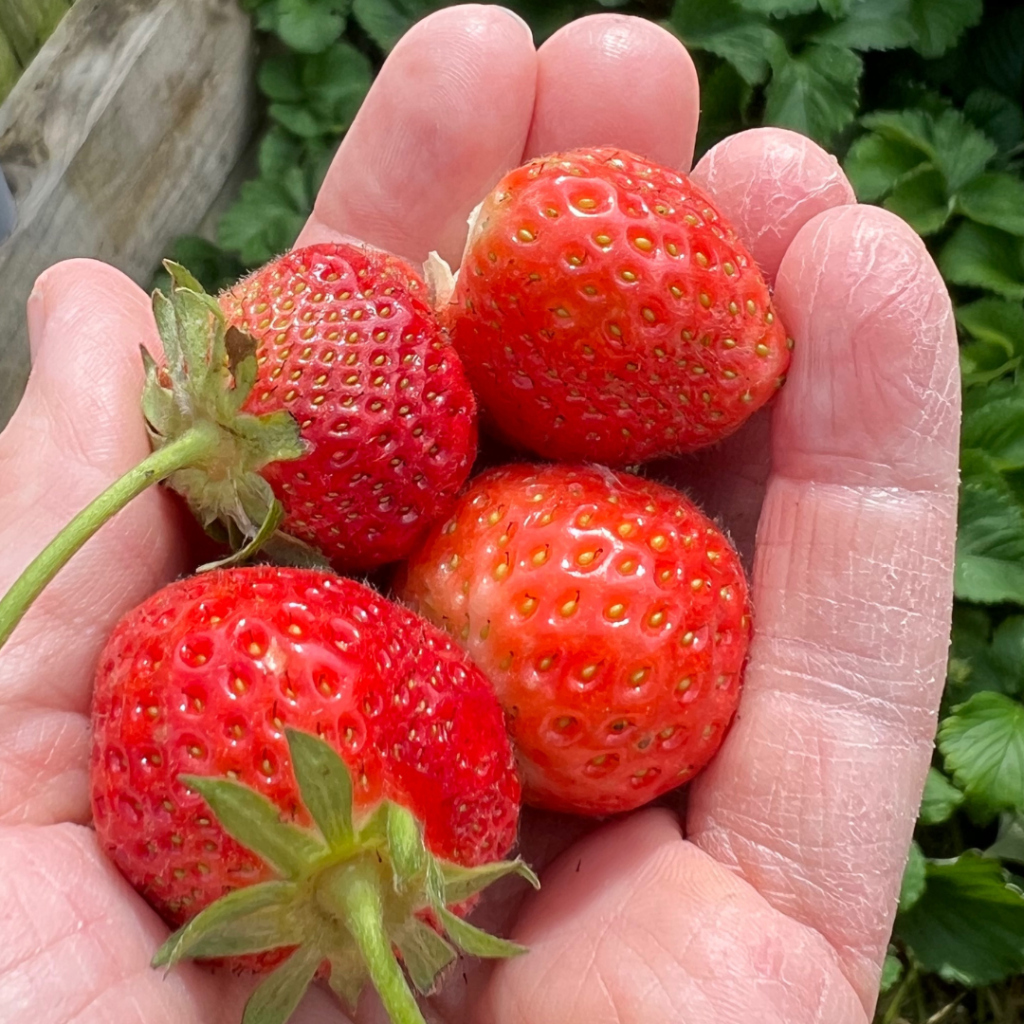
I have been growing strawberries in my garden at home for years and this year I decided to add a strawberry patch to my allotment as well. This is a fun and easy allotment activity for kids. Strawberries are not only tasty but also packed with nutrients and can be easily slipped into many recipes such as breakfast smoothies and protein pancakes. In this blog post, I will explore why strawberries are good for you, how they propagate, and provide tips for growing and protecting them from pests.
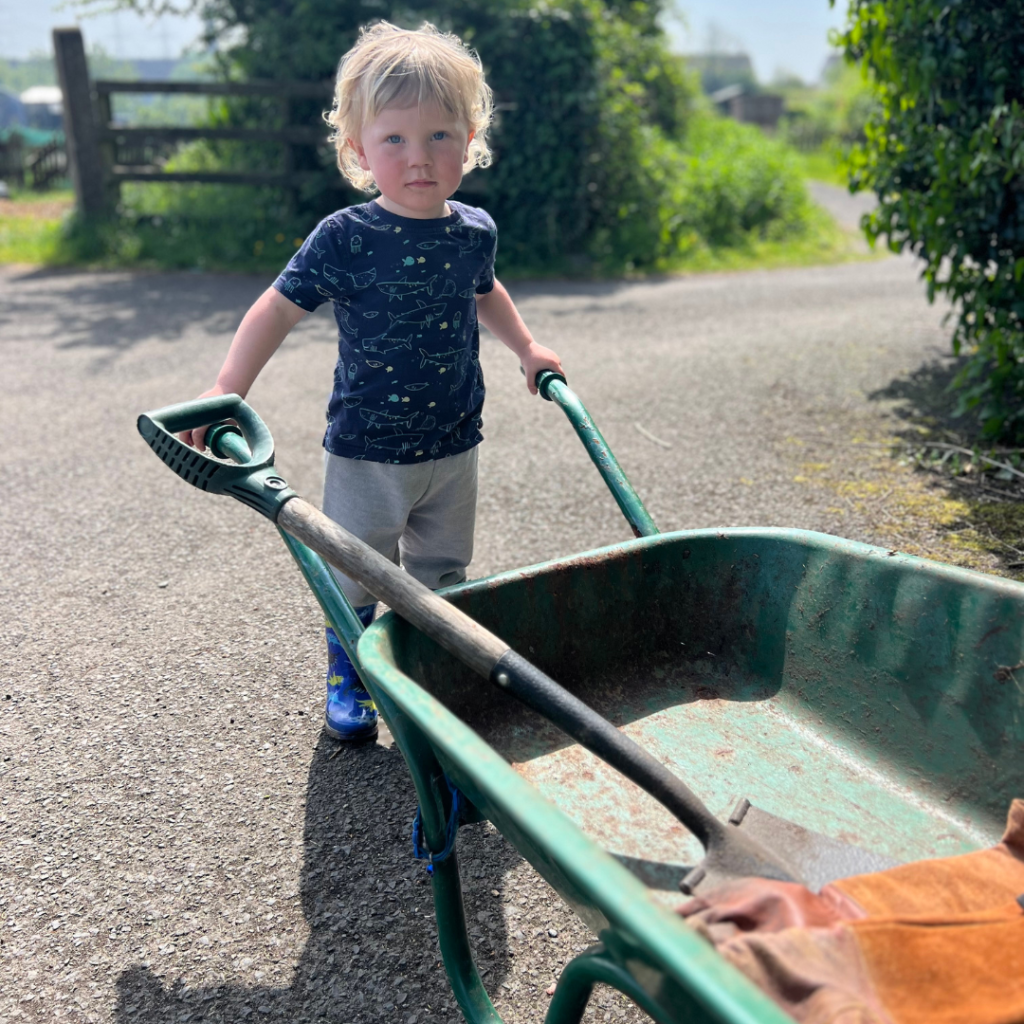
Why Strawberries Are Good for You
Strawberries are more than just a sweet treat; they offer numerous health benefits and are packed with essential nutrients. They boast high concentrations of vitamin C, manganese and folic acid, along with an array of B vitamins (B1, B2, B3, and B6). Additionally, they are a great source of potassium, calcium, magnesium, phosphorus, sulfur, and chlorine. They are also a good source of dietary fiber, which is important for digestive health. Strawberries are rich in antioxidants, such as anthocyanins, ellagic acid, and quercetin. Antioxidants help protect your cells from damage by free radicals and may reduce the risk of chronic diseases. Strawberries have been shown to improve heart health by reducing inflammation, lowering cholesterol levels, and improving blood vessel function. The high fiber and potassium content also contribute to heart health. Despite their sweetness, strawberries have a low glycemic index, meaning they have a minimal impact on blood sugar levels. They also contain fiber, which helps regulate blood sugar by slowing down the absorption of sugars.
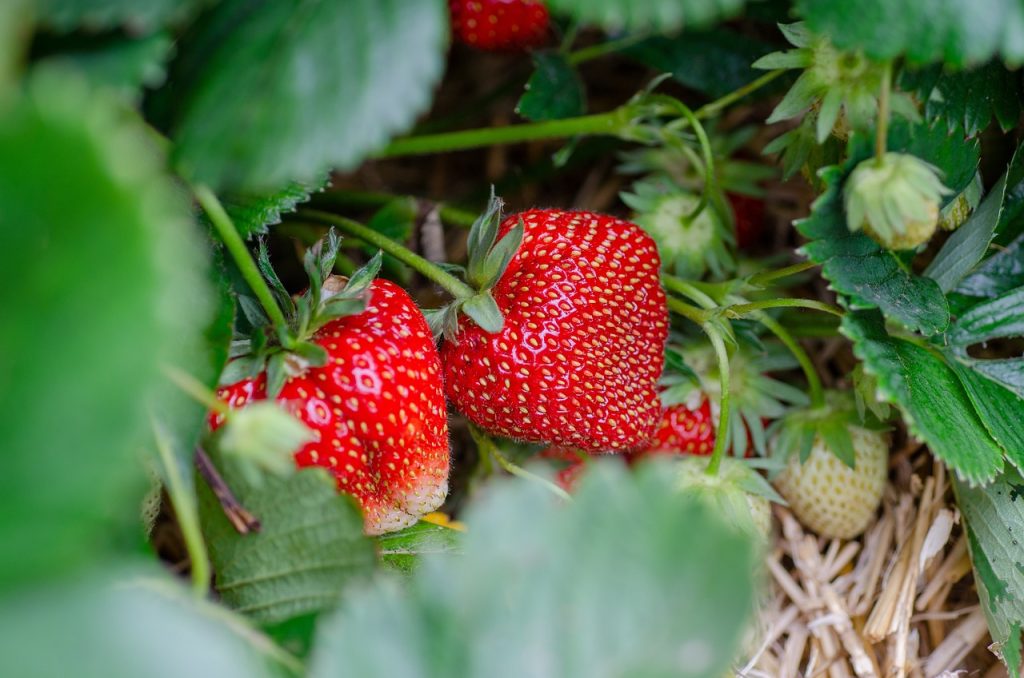
How Strawberries Propagate
Understanding how strawberries propagate can help you plan your strawberry patch effectively:
Runners
Strawberries primarily propagate through runners, which are horizontal stems that grow out from the main plant. These runners produce new plants, called daughter plants, which take root and grow into mature plants. This method of propagation allows strawberries to spread and cover a larger area over time. This also means that once you buy and plant your initial plants you will keep getting plants every year making strawberries a long term inexpensive addition to your garden.
Seeds
While less common in home gardening, strawberries can also propagate from seeds. This method is slower and more labor-intensive than using runners, but it allows for genetic diversity and the potential development of new strawberry varieties.
Division
Another method of propagation is dividing the crown of an existing plant. This involves splitting a mature plant into smaller sections, each with its own roots and shoots, and replanting them separately. This can be a useful way to rejuvenate older plants and increase your strawberry yield. I do this in early spring when my plants are starting to wake up from winter.
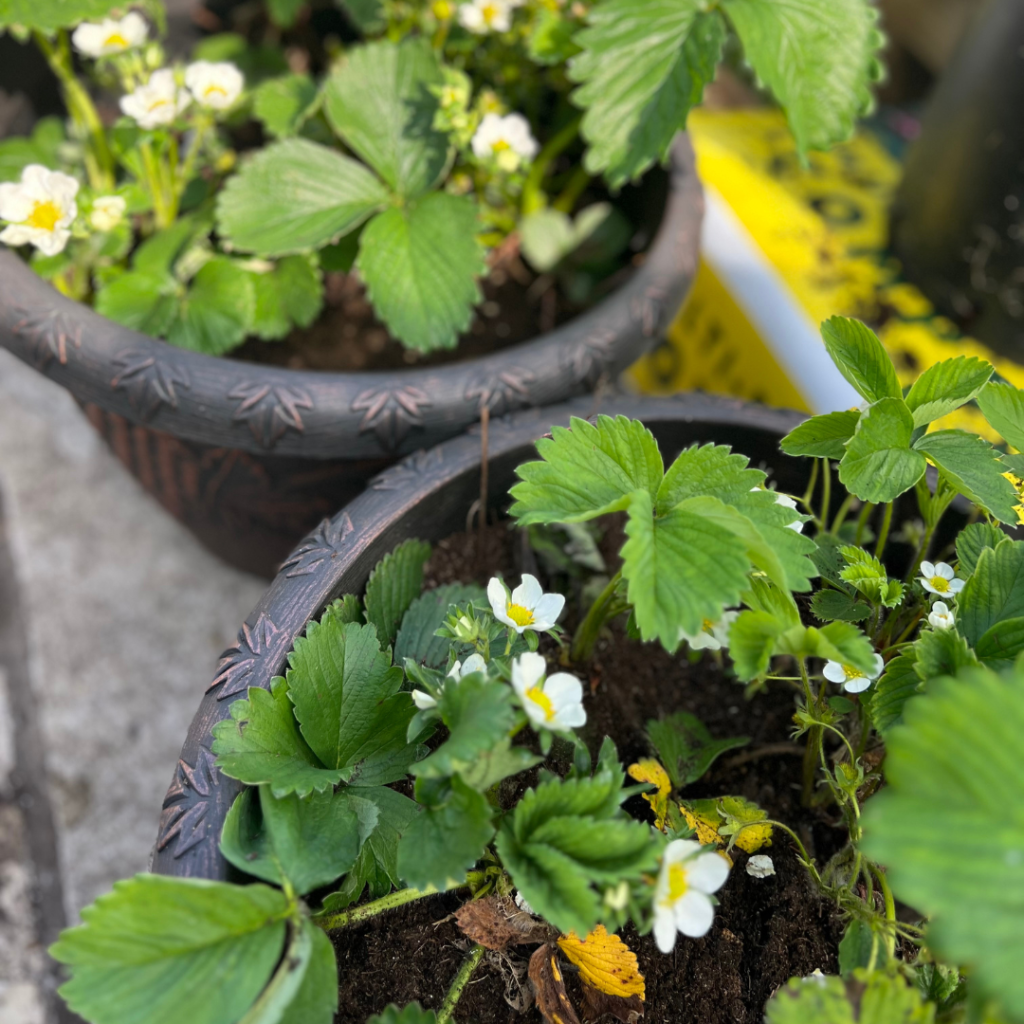
Tips for Growing and Protecting Strawberries
Growing strawberries requires some care and attention to ensure a healthy and productive patch, though in all honesty they have been one of the easiest plants I have ever grown which require very little from me. Here are some tips to help you get started and protect your plants from pests:
Choosing the Right Location
Strawberries need at least 6-8 hours of direct sunlight per day. Choose a sunny spot in your garden or allotment for optimal growth and fruit production. They prefer well-drained, slightly acidic soil with a pH between 5.5 and 6.8. Amend the soil with organic matter, such as compost or well-rotted manure, to improve fertility and drainage. This strawberry patch was created in a no dig bed as that is the approach I take at my allotment.
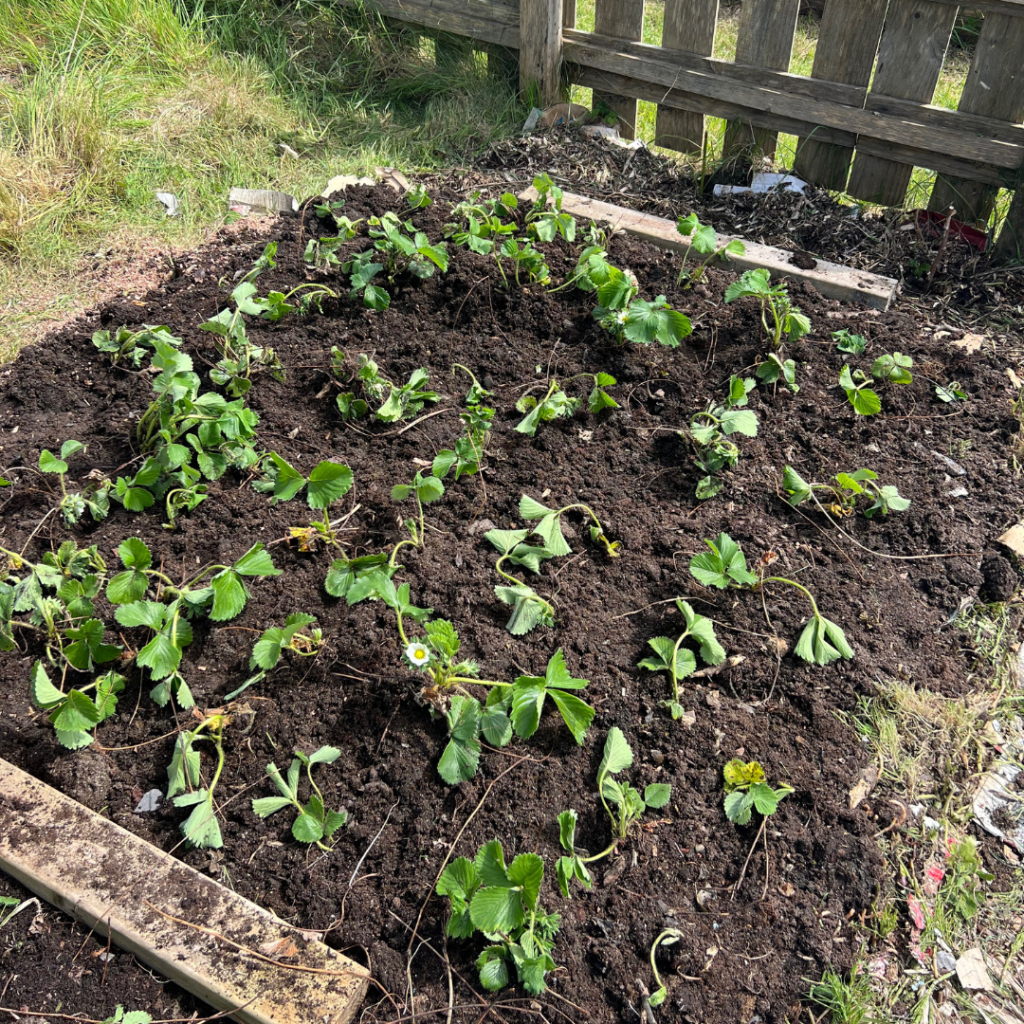
Planting your Strawberry Patch
Plant strawberries in early spring after the danger of frost has passed. In warmer climates, they can also be planted in the fall. Common advice is to space plants about 12-18 inches apart in rows that are 24-36 inches apart. This allows for good air circulation and room for runners to spread. As you can see mine plants are closer togther than that and I have grown them in smaller spaces in my home garden. My advice is don’t over think it and simply get them in the ground.
Watering your Strawberries
Keep the soil consistently moist, especially during flowering and fruiting. Strawberries need about 1-2 inches of water per week. Avoid overhead watering to reduce the risk of fungal diseases. Use mulch, such as straw or pine needles, to retain soil moisture, suppress weeds, and keep the fruit clean.
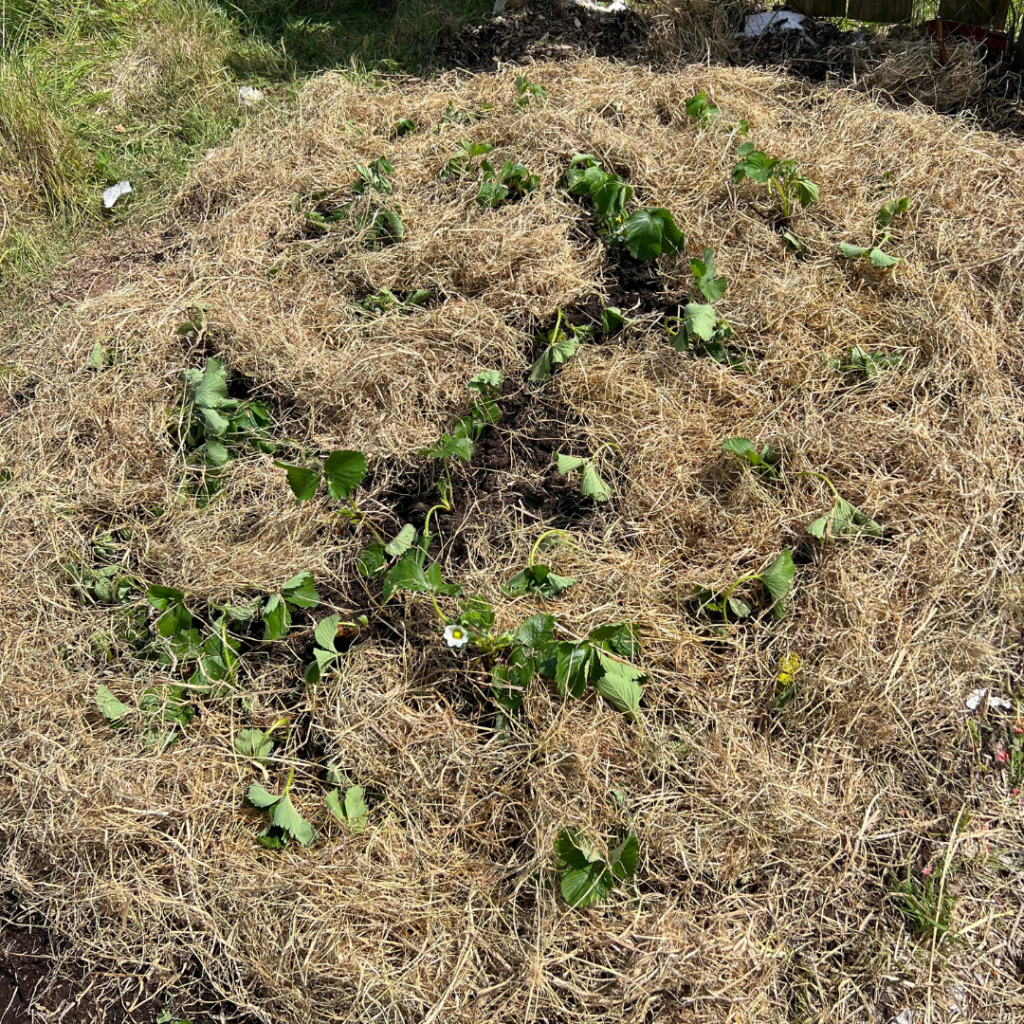
Protecting Strawberries from Pests
Strawberries are vulnerable to a variety of pests that can cause significant damage to the plants and fruits. Common pests include slugs and snails, which feed on the ripe fruit, leaving behind holes and slime trails. I find the straw can help deter these pests as they do not like to climb over it. Broken egg shells can also help deter slugs and snails. Aphids are another typical pest, sucking sap from the leaves and stems, which can stunt plant growth and transmit diseases. Spider mites, thrips, and fruit flies are also known to infest strawberry plants, leading to reduced fruit quality and yield. Additionally, birds often pose a threat by pecking at the strawberries, making protective netting a common defense strategy for gardeners. I have heard good things about using painted stones as decoy strawberries though I have never used these myself. Rotate your strawberry patch every 3-4 years to prevent soil-borne diseases. Remove and destroy any infected plants promptly.
The Strawberry Tree
I first came across the Strawberry Tree on one of our Day Trips in the Motorhome to the Arboretum in Castlewellan, County Down. The Himalayan strawberry tree (Cornus capitata), also known as the Bentham’s cornel, is a unique evergreen shrub or small tree native to the Himalayan region. It belongs to the dogwood family, Cornaceae. This tree is celebrated for its ornamental appeal, featuring glossy, dark green leaves and clusters of small, yellowish-green flowers that bloom in spring. These flowers give way to strawberry-like fruits that turn red when ripe, adding vibrant color to the landscape. The fruits are not only visually appealing but also edible, though they have a bland taste compared to true strawberries. The Himalayan strawberry tree is also valued for its ability to thrive in a variety of soil types and its resilience in cooler climates, making it a popular choice for gardeners looking to add a touch of exotic beauty to their spaces.
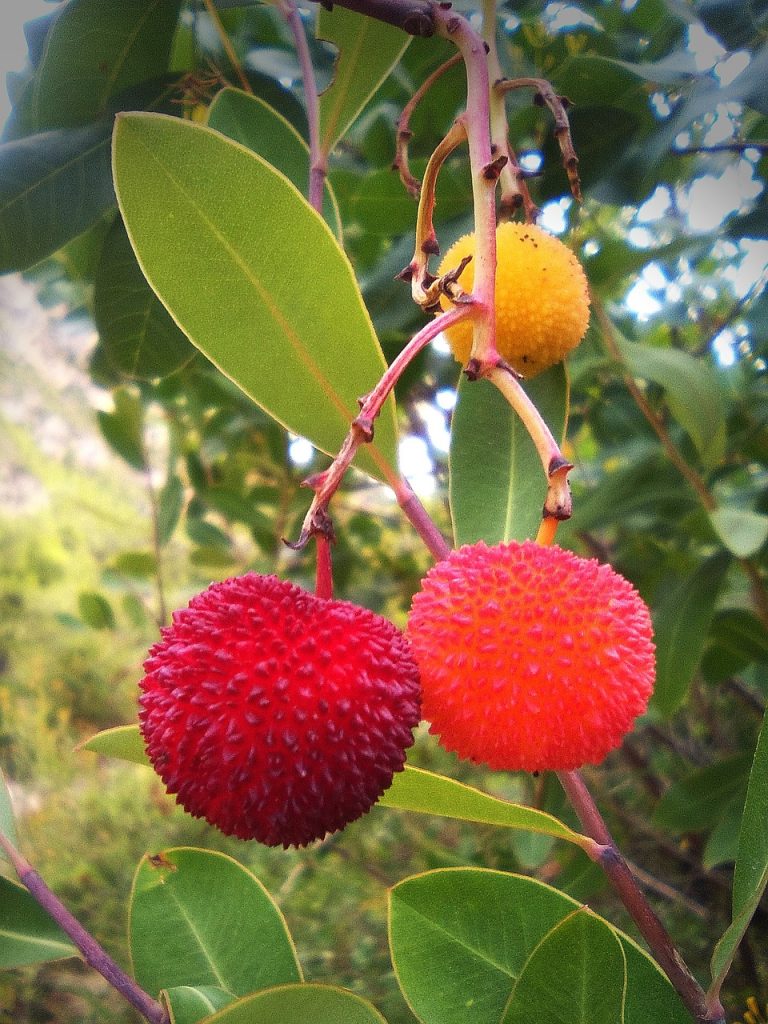
I hope you have enjhoyed this post and foudn some useful information. As you can see creating a strawberry patch can be ae easy and rewarding gardening project. With proper care and attention, you can enjoy an abundant harvest of delicious, nutritious strawberries right from your garden or allotment for years to come. Happy planting!

[…] children involved in creating a strawberry patch can be a delightful and educational experience. Start by choosing a sunny spot and preparing the […]